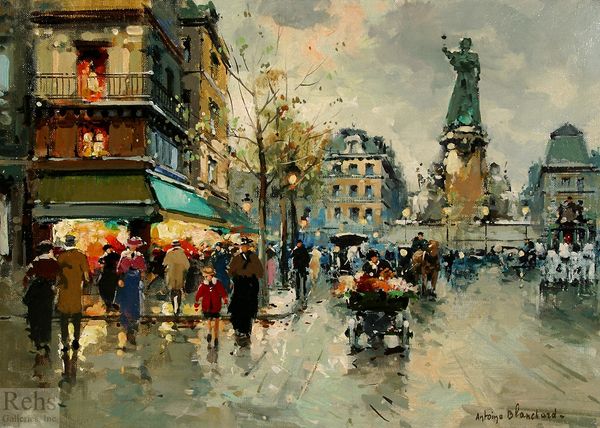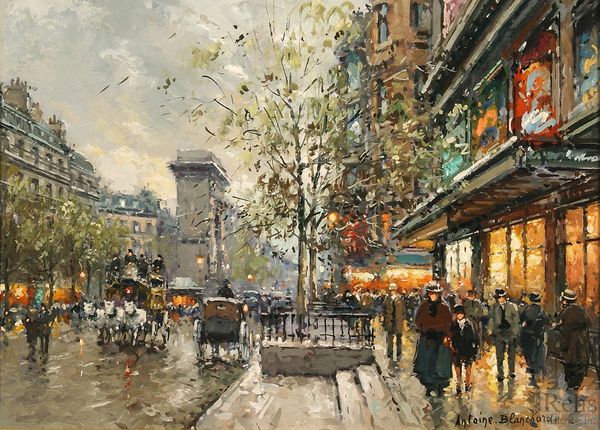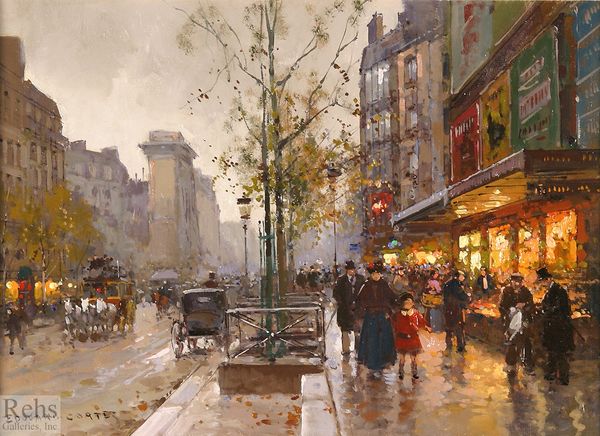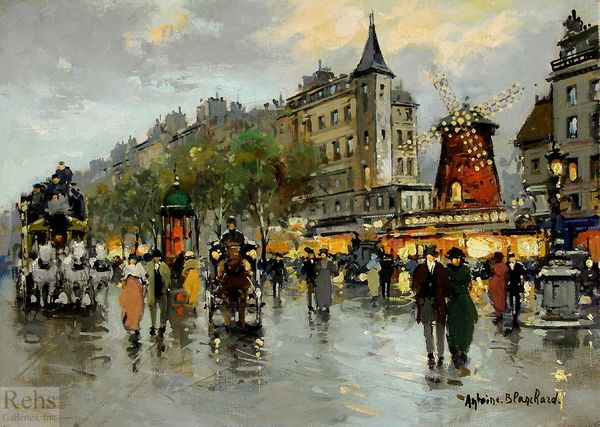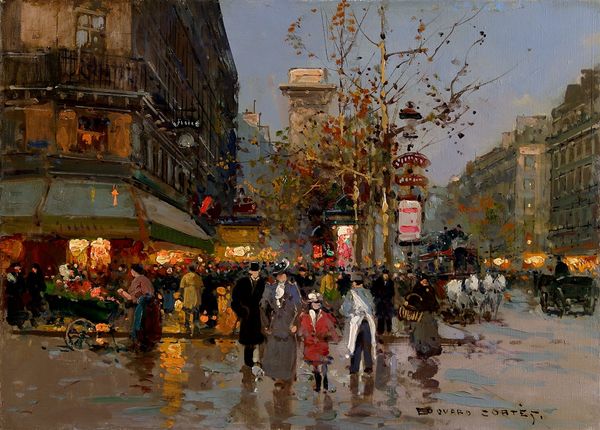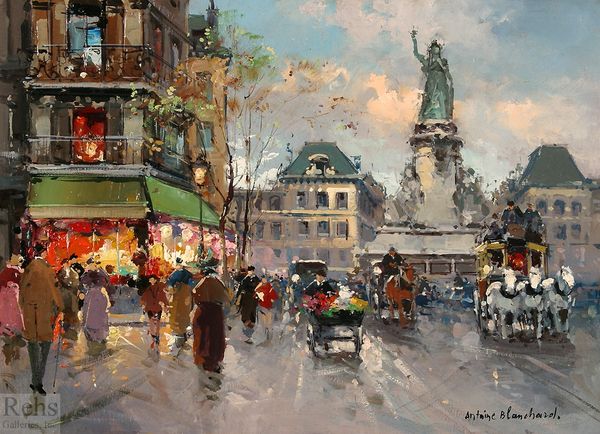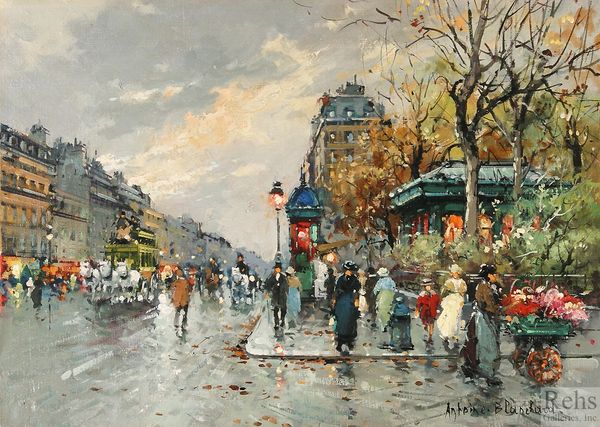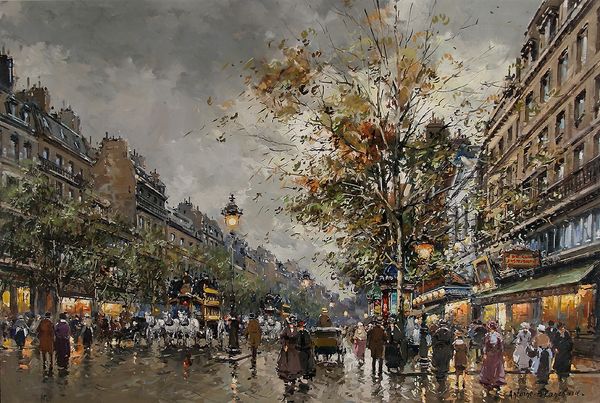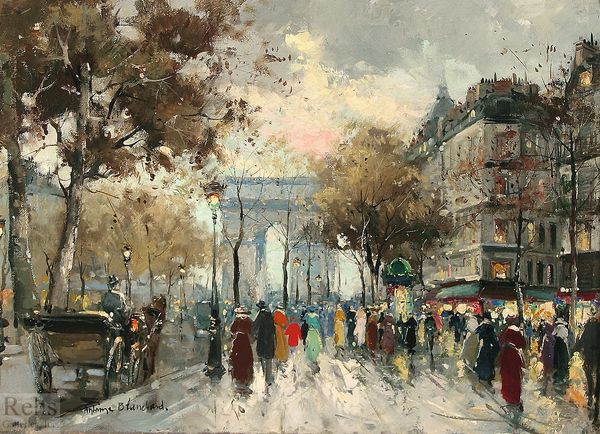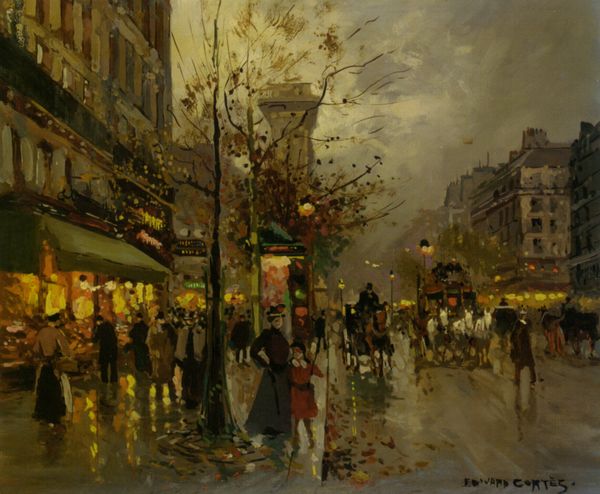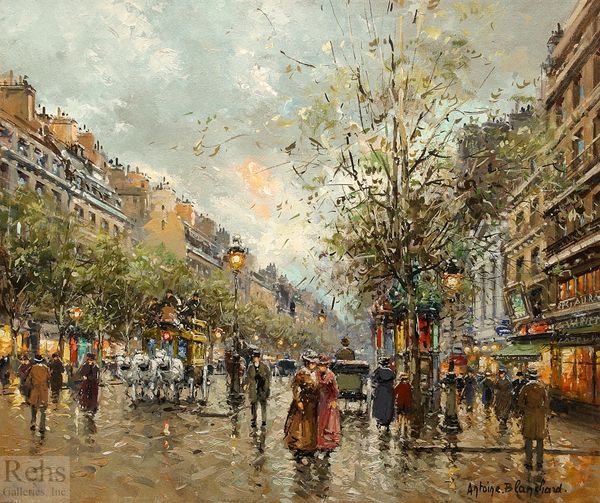
oil-paint
#
urban landscape
#
impressionism
#
impressionist painting style
#
oil-paint
#
vehicle
#
landscape
#
impressionist landscape
#
figuration
#
oil painting
#
cityscape
Copyright: Antoine Blanchard,Fair Use
Editor: Here we have Antoine Blanchard's "Place de la Republique," rendered with oil paint. The scene feels bustling yet hazy, softened by the Impressionistic style. What jumps out to you about the formal qualities of this piece? Curator: Notice how Blanchard manipulates light and shadow. The dappled brushstrokes create a vibrant surface, capturing the fleeting effects of light on the Parisian street. How does the artist use colour to define the space? Editor: I see muted blues and grays dominating the sky and wet street, contrasting with warmer hues in the buildings and shopfront. Does that contrast structure the composition, leading the eye through the scene? Curator: Precisely. The strategic placement of these colour blocks—the cool tones versus the warmer ones—serves to delineate depth and volume. But look closer: are there structural anomalies that challenge the picture-plane depth? Editor: I see it. The buildings seem to flatten as they recede. So, the interplay of colour creates an illusion of depth, while the painting simultaneously acknowledges its two-dimensionality. Fascinating. I hadn’t noticed the push and pull before. Curator: It is in these subtle formal tensions that we apprehend the complexity of Blanchard's visual language. The flattened perspective paradoxically enhances the spatial dynamic, creating an optical game. What does the structural paradox provoke in the viewer? Editor: It prompts a more active engagement with the painting. You aren’t just passively observing; you’re trying to resolve the spatial ambiguity. I initially perceived a pleasant scene, but the painting holds much more. Thanks for helping me see that! Curator: My pleasure. Paying such close attention allows us a greater and ever-deepening sensitivity to the expressive power of the visual and material aspects of the work of art.
Comments
No comments
Be the first to comment and join the conversation on the ultimate creative platform.
